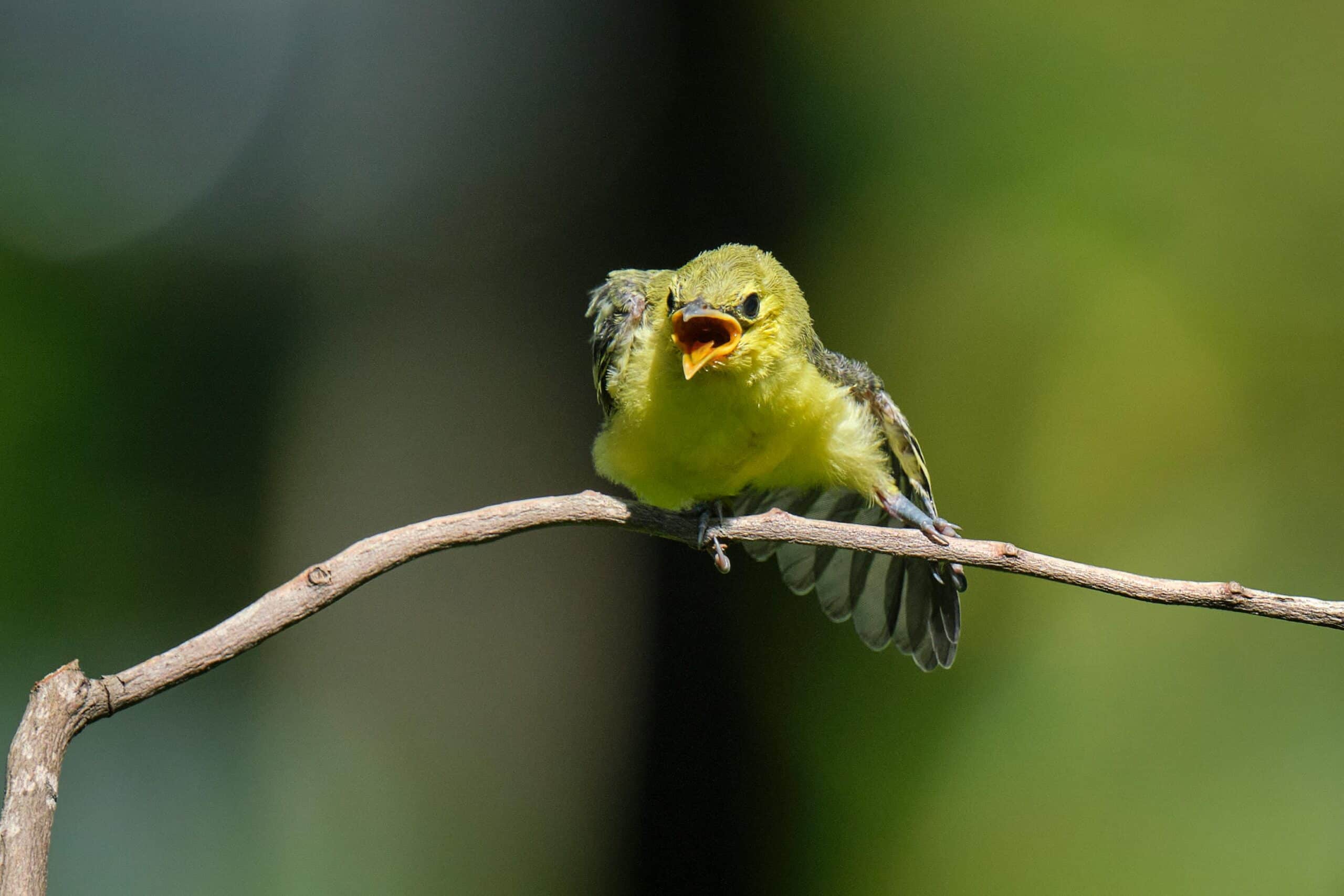TL/DR –
Climate change is serving migratory birds a diss by advancing spring’s start, causing a misalignment between these vacationing avians and their food sources. Birds are showing up after the “green-up” (when the blooms bust open and insects appear), and this lack of punctuality could put their survival at risk. Heads up, y’all – if greenhouse-gas emissions don’t fall, our feathered friends might fail to keep up with the changing seasons and we’ll be listening to some quiet skies.
Western Tanager: A Flame in Flight
The male western tanager is a striking sight—like a small flame, with a ruby head melting into a bright, lemon-colored body. The females, in contrast, sport a subdued dusty yellow. These birds winter in Central America, and their habitats span from central Costa Rica to the deserts of southeastern Sonora in western Mexico. Come spring, they undertake a thousands-of-miles journey to the conifer forests of the Mountain West, a voyage that takes them through grasslands, deserts, and sometimes suburban yards.
Climate Change Threatens Migratory Birds
Western tanagers, like most migrating birds, eat enormous amounts of insects and berries to power their long journeys. But as the onset of spring arrives earlier each year due to global climate change, birds like these may reach their destinations after the “green-up”— the time when flowers bloom and insects emerge. A recent study reveals that this mismatch between migratory birds and their food sources could spell disaster for their survival.
Spring Green-Up Shifts and Bird Migration
The study used satellite imagery from 2002 to 2021 to calculate the average timing of spring green-up along 150 North American bird species’ typical migration routes. The researchers found that spring is now starting earlier along these routes. Birders’ observations from eBird confirmed this trend—approximately 110 of the 150 bird species studied were unable to adjust their migration timings to match the shifting schedule of spring.
The Impact of Timing Mismatch
The study underscores the far-reaching impact of birds’ inability to adapt to season changes resulting from climate change. Timing mismatches could potentially affect migratory birds’ survival and their ability to reproduce. For instance, a recent study found that songbirds arriving at their breeding grounds earlier or later than the onset of spring produced fewer offspring than those arriving on time.
Mysteries of Bird Migration
Despite the awe and fascination bird migration has inspired in humans for millennia, there’s still much we don’t understand about it. Birds rely on a variety of cues for migration: temperature, day length, landforms, the stars, the Earth’s magnetic field, and genetic coding. While some of these, like temperature, are impacted by climate change, others like day length aren’t, potentially explaining why some species are more affected by climate change than others.
Declining Bird Populations and Conservation Efforts
Bird populations worldwide are in decline, with North American bird numbers dropping by approximately 30% since 1970. This new knowledge of how climate change affects bird migration could help inform future conservation efforts. It emphasizes the urgent need to reduce greenhouse-gas emissions and halt habitat loss as swiftly as possible.
Original Story at www.theatlantic.com





